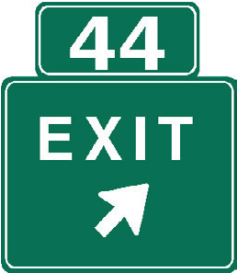
Section 1.5 Continued: Guide Signs
Guide Signs
Guide signs may indicate what road you are on, and how to get to your destination. Many guide signs are rectangular, but some have other shapes. There are several different kinds of guide signs — route markers, information, destination, distance, and location signs. These signs may be accompanied by a “To” sign or an arrow, indicating the highway, facility, or location that can be reached by following the signs. Here are some examples:
Exit 44 sign

Numbered interstate and highway signs
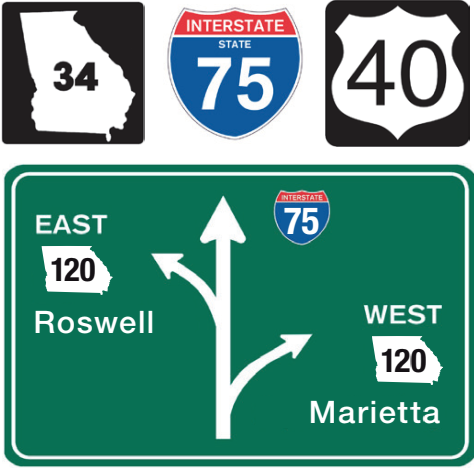
The numbers on these signs designate specific exits, interstates or highways.
Junction sign

Intersection of U.S. Route 47 & Ga. Highway 38. These roads are going to cross or meet the highway you are traveling on.
Bike route sign
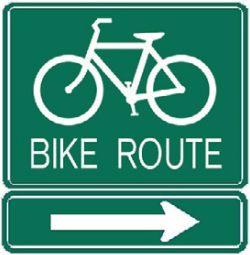
This sign marks an officially designated bicycle route. Be cautious of bicyclists while traveling on this road.
Milepost marker
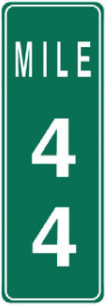
Milepost markers are placed each mile along the edge of the roadway from one end of the state to the other. Zero always starts at the south or west border where a route begins.
Caution sign
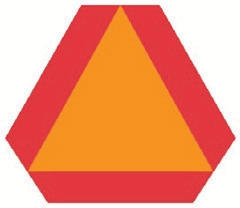
Caution - a vehicle displaying this emblem is a slow moving vehicle. A slow-moving vehicle is defined as any vehicle moving less than 25 miles per hour. They are required by law to display this emblem.
Parking sign
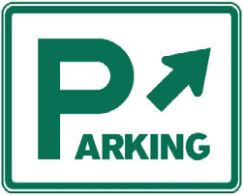
This sign means there is a public parking area in the direction of the arrow.
Railroad crossing sign
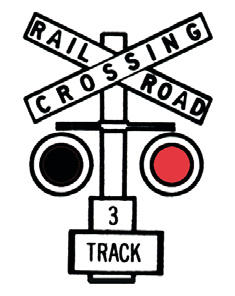
The cross-buck is placed at all railroad crossings. Yield to any approaching trains. Slow down, look and listen before crossing. A sign below the cross-buck indicates the number of tracks. A complete stop is required when a red light is flashing.
Traffic Signals and Signs
Traffic signals are placed at intersections to control the orderly movement of traffic and to prevent crashes. Drivers (including bicyclists) and pedestrians must obey these signals except when an officer is directing traffic. If a traffic signal is not functioning at all at an intersection, all drivers must treat the intersection as if a stop sign is posted for all directions. If a traffic signal is malfunctioning and flashing, drivers must proceed based on the color of the flashing signal they are facing: if the driver is facing a yellow flashing signal, the driver may proceed with caution; if the driver is facing a red flashing signal, the driver must stop and wait until it is safe to proceed.
Red light
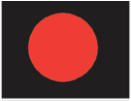
A red light means you must make a complete stop before entering the crosswalk or intersection and wait until the light turns to green before proceeding.
Yellow light
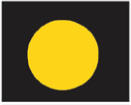
A yellow light warns that the light is changing from green to red. Slow down and prepare to stop.
Green light
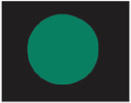
A green light means you may proceed if it is safe to do so after stopping for pedestrians and yielding to vehicles within the intersection.
Green up arrow
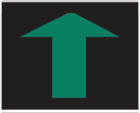
A green arrow means you may proceed carefully only in the direction the arrow is pointing after stopping for pedestrians and yielding to vehicles within the intersection. In this case you may go straight ahead only.
Green left arrow
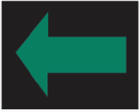
A green arrow, in this case, means you may turn in the direction of the arrow after stopping for pedestrians and yielding to vehicles within the intersection.
Yellow right arrow
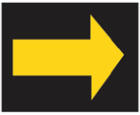
A yellow arrow may appear after a green arrow and warns you to clear the intersection.
Flashing red light
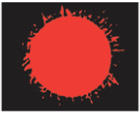
A red flashing light means you must stop completely (treat as you would a stop sign). Proceed with caution only after yielding the right-of-way to pedestrians and to other vehicles at the intersection.
Flashing yellow light
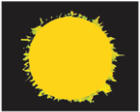
A yellow flashing light means you must slow down and exercise caution before proceeding through the intersection.
Flashing yellow arrow

A flashing yellow arrow means you may turn left after yielding to oncoming traffic and pedestrians (oncoming traffic still has the green light).